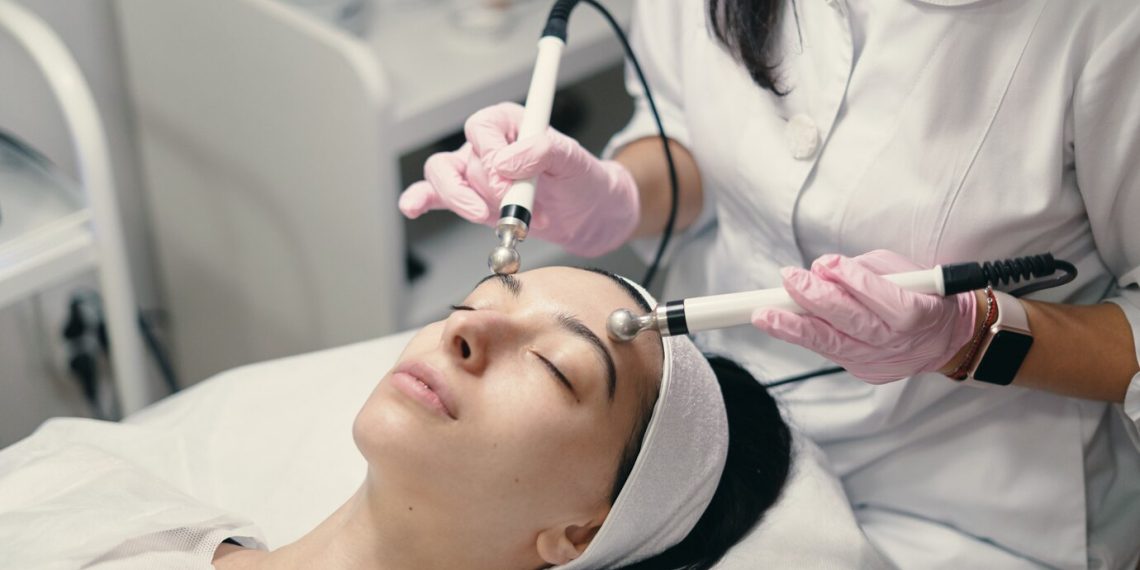Laser skin resurfacing has become one of the most sought-after treatments for those looking to rejuvenate their skin, minimize signs of aging, and achieve a radiant, youthful complexion. This advanced procedure addresses a range of skin concerns, from wrinkles and fine lines to acne scars, uneven skin tone, and sun damage. However, understanding how laser skin resurfacing works, its benefits, and how to select the right clinic is essential for anyone considering this transformative treatment.
In this guide, we’ll dive into the basics of laser skin resurfacing, explore its key benefits, discuss what results you can expect, and provide tips on choosing a qualified clinic for safe and effective treatment.
What Is Laser Skin Resurfacing?
Laser skin resurfacing is a non-surgical cosmetic procedure that uses laser energy to remove damaged skin layers, promoting the growth of new, healthy skin. The process involves controlled precision that allows providers to target specific layers of the skin, minimizing damage to surrounding areas and reducing downtime. By promoting collagen production and cellular regeneration, laser skin resurfacing reveals smoother, firmer, and more evenly toned skin.
There are two main types of laser skin resurfacing:
- Ablative Lasers: These lasers (such as CO2 and Er
) remove the outer layer of skin, promoting more significant skin resurfacing for deeper wrinkles, scars, and sun damage. Ablative lasers are effective but often require a longer recovery period. - Non-Ablative Lasers: These lasers (such as Fraxel) heat the underlying skin tissue without removing the top layer, stimulating collagen production with minimal downtime. Non-ablative lasers are less invasive, making them ideal for patients who need a quicker recovery and have milder skin concerns.
Depending on your skin type, concerns, and desired results, your provider will recommend the most appropriate laser type for your treatment.
Key Benefits of Laser Skin Resurfacing
Laser skin resurfacing offers a multitude of benefits for those looking to improve the appearance and texture of their skin. Here are some of the primary advantages:
1. Reduces Fine Lines and Wrinkles
Laser skin resurfacing is highly effective in reducing the appearance of fine lines and wrinkles, particularly around the eyes, mouth, and forehead. By promoting collagen production, it helps plump the skin, smoothing out lines and giving the face a youthful, rejuvenated look.
2. Treats Sun Damage and Hyperpigmentation
Years of sun exposure can lead to age spots, freckles, and discoloration. Laser skin resurfacing targets these pigmented areas, breaking up melanin to reveal a more even skin tone. It’s also effective for treating sun damage, giving skin a healthier, fresher appearance.
3. Improves Skin Texture and Reduces Acne Scars
Laser skin resurfacing is commonly used to improve skin texture by minimizing the appearance of acne scars, rough patches, and enlarged pores. It smooths the skin by encouraging new skin cell growth, creating a softer, more refined surface.
4. Tightens Skin and Boosts Elasticity
By stimulating collagen and elastin production, laser skin resurfacing can improve skin firmness and elasticity. This makes it an ideal treatment for those experiencing mild to moderate skin laxity, particularly around the jawline, cheeks, and under the eyes.
5. Minimal Downtime Options Available
With advances in laser technology, patients can now choose treatments that offer quicker recovery times. Non-ablative lasers require minimal downtime, making laser skin resurfacing accessible for those with busy schedules. However, even ablative laser treatments now have more manageable recovery times, allowing patients to return to their routines sooner than ever before.
What Results Can You Expect from Laser Skin Resurfacing?
Laser skin resurfacing can provide dramatic improvements in skin texture, tone, and elasticity, but results can vary based on factors like the type of laser used, skin type, and individual goals. Here’s an overview of what to expect in terms of results and recovery:
Immediate Results
After laser treatment, you may notice redness, swelling, and mild discomfort, which typically subside within a few days. Your skin may also feel tighter or warmer, similar to a mild sunburn. This initial phase is part of the natural healing process as new skin cells begin to regenerate.
Short-Term Results (1–2 Weeks)
Within one to two weeks, the outer layer of treated skin begins to peel or flake, revealing the fresh, smoother skin underneath. You’ll likely notice improvements in skin texture, with a more even tone and a subtle glow. Non-ablative laser treatments typically have a quicker recovery, while ablative lasers may require more time.
Long-Term Results (3–6 Months)
The most significant results are visible over the following months as collagen production continues to increase. Wrinkles, fine lines, and scars soften, and skin tightens for a firmer, youthful appearance. Most patients see the full results of laser skin resurfacing within three to six months, with benefits lasting up to a year or longer, depending on the laser type and post-treatment skincare routine.
Maintenance
While laser skin resurfacing offers long-lasting results, skin aging and sun exposure can gradually impact the skin over time. Maintenance treatments every 6–12 months can help prolong the effects and keep your skin looking youthful and radiant.
Choosing the Right Clinic for Laser Skin Resurfacing
Selecting a reputable, experienced clinic is crucial to achieving safe, satisfying results with laser skin resurfacing. Here’s a checklist of factors to consider when choosing the best provider:
1. Verify Credentials and Expertise
Look for a clinic that employs licensed dermatologists, plastic surgeons, or certified laser technicians with experience in laser skin resurfacing. The provider’s qualifications are essential to ensuring safe and effective treatment. Board certification in dermatology or plastic surgery is an additional indicator of the provider’s expertise.
2. Check the Types of Lasers Available
Not all lasers are the same, and different types of lasers are more suitable for certain skin types or conditions. A reputable clinic should offer a variety of laser options, including both ablative and non-ablative lasers, and be able to customize treatments based on your skin type and goals. Popular laser brands include Fraxel, CO2, Er
, and PicoSure, among others.
3. Read Patient Reviews and Testimonials
Patient reviews can provide valuable insights into the clinic’s reputation and the quality of its services. Look for reviews on Google, RealSelf, and Yelp to see what past clients have experienced, particularly in terms of results, bedside manner, and overall satisfaction with the clinic.
4. Request Before-and-After Photos
Before-and-after photos give you a realistic idea of what to expect from laser skin resurfacing. Ask the clinic to provide photos of previous clients with similar skin concerns or skin types, so you can assess the potential outcomes for your treatment.
5. Schedule a Consultation
A consultation is an opportunity to meet with the provider, discuss your goals, and ask any questions you may have. During the consultation, the provider should examine your skin, discuss the most appropriate laser options, and give you a clear understanding of the expected results, risks, and aftercare requirements.
6. Inquire About Safety and Aftercare
Make sure the clinic follows proper safety protocols, including using FDA-approved equipment and protective eyewear. Ask about their aftercare instructions, as post-treatment care is crucial to achieving optimal results and minimizing side effects. A reputable clinic should provide detailed guidance on post-treatment skincare and how to manage any temporary side effects.
Preparing for Laser Skin Resurfacing
Once you’ve chosen a clinic, your provider will give you specific pre-treatment instructions to prepare your skin for the procedure. These may include:
- Avoiding Sun Exposure: Excessive sun exposure can increase the risk of side effects, so avoid direct sunlight and use sunscreen in the weeks leading up to your treatment.
- Avoiding Certain Skincare Products: You may need to stop using retinoids, glycolic acid, and other exfoliants that can increase skin sensitivity.
- Hydrating Your Skin: Keeping your skin well-hydrated can promote healing and optimize results.
Following these guidelines can help ensure a smooth procedure and reduce potential complications.
Post-Treatment Care: How to Maximize Results
The aftercare period is essential for achieving the best results with laser skin resurfacing. Here are some general tips:
- Use a Gentle Cleanser: Your skin will be sensitive after treatment, so stick to a mild, fragrance-free cleanser.
- Moisturize Regularly: Keep your skin hydrated with a rich moisturizer to aid in healing and reduce dryness or flaking.
- Apply Sunscreen: Protecting your skin from the sun is crucial after laser treatment, as sun exposure can lead to hyperpigmentation and reduce the effectiveness of the treatment.
- Avoid Makeup and Exfoliants: Avoid makeup and exfoliating products for at least a week to prevent irritation.
- Follow Your Provider’s Instructions: Your provider may recommend specific products or guidelines tailored to your skin’s needs. Follow these instructions closely for optimal recovery and results.
Is Laser Skin Resurfacing Right for You?
Laser skin resurfacing is a versatile treatment that can address a wide range of skin concerns, but it may not be suitable for everyone. Ideal candidates are generally in good health, have realistic expectations, and are free from active skin infections, severe acne, or certain medical conditions. Those with darker skin tones may need to consult with a skilled provider to determine the safest laser option to minimize the risk of hyperpigmentation.
If you’re considering laser skin resurfacing, consult with a qualified provider who can assess your skin type, discuss your goals, and recommend a treatment plan customized to your needs.







